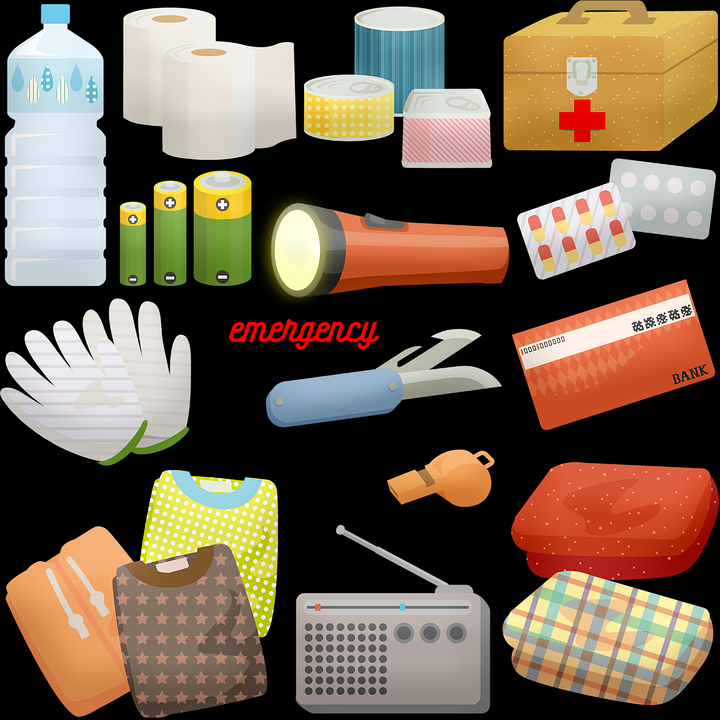
How To Create Your Own Roadside Emergency Kit
Car emergencies in the movies always seem to start the same way. First, it’s dark, snow is falling, and you've gotten lost. Then, suddenly, the car slips on ice, and you find yourself plowed into a drift, unable to get out. And, of course, there’s no cell signal, so roadside assistance isn’t an option.
Despite the overuse of car strandings and emergencies in Hollywood, the reality is that they do happen more often than you might think. And, they happen year-round, not just on dark wintry nights. But, you can prepare yourself and your vehicle to overcome a car emergency with the right tools. That’s where a roadside emergency kit comes in.

Image Credit: / Pixabay
What’s A Roadside Emergency Kit?
Roadside emergency kits are the survival pack for vehicular emergencies. They come loaded with tools to help drivers survive scenarios like a car stuck in a snowdrift, strandings on the highway, flat tires, and more.
There are many roadside emergency kits on the market, and these kits are great for a generic solution to roadside troubles. However, it’s usually best to create your own roadside emergency kit to suit your individual needs, location, environment, and situation. You can use a generic store bought kit as a starter for your personalized roadside emergency setup, or you can start from scratch using the list below.
What You Need In An Emergency Kit:
You should understand that roadside emergency kits need to adapt to the environment, vehicle type, and driver situation. Thus, your kit should include year-round and seasonal-based supplies, including the following:
Year-Round Essentials
- Instructions. Keep a written set of instructions on how to change a tire, how to change your oil, and how to send signs for help in your vehicle at all times.
- Jumper cables or Portable Battery (or both, with jumper cables as a backup.) Portable batteries range from $60-$150 but can help more than jumper cables on a less-traveled road.
- Window breaker and seatbelt cutter tool. If you get stuck in your car due to an accident, the window breaker and seatbelt cutting tool can get you out of your vehicle.
- First Aid Kit. Every car should have a quality first aid kit containing bandages, disinfectants, pain killers, and nitrile gloves in case of injury.
- Flashlight or Electric Lantern. Consider purchasing a flashlight or lantern with an SOS flash built-in. Additionally, you can purchase solar-powered lanterns and avoid the risk of dead batteries.
- Phone power bank. You’ll want to conserve your car’s battery and gas and avoid plugging your phone in for charging. Instead, keep a charged power bank in your emergency kit for phone charging purposes.
- Batteries. Always keep several sets of batteries matching any tools in your kit.
- Motor oil. Even if you don’t know how to change your car’s oil, a helpful stranger might. Keep a quart of oil in your car in case you need an emergency oil change.
- Rags. You’ll never know when clean rags may come in handy during an emergency. They work well for oil changes, injuries, and insulation.
- Triangle Reflectors. If you’re stranded on the side of the road, you want to make your car as visible as possible. Triangle reflectors warn oncoming traffic of your presence.
- Coolant. A coolant leak can cause a vehicle to stop functioning. Keep coolant in your kit for emergency refills.
- Blanket. Always keep a warm blanket in your kit, regardless of the season. A fleece or wool blanket will work well.
- Tool Kit. Keep a set of tools containing an adjustable wrench, sockets, screwdriver, and pocket knife for any unexpected mechanical tasks.
- Folding shovel. Collapsible shovels are essential for digging yourself out of mud, snow, and other situations.
- Tire pressure gauge and tire sealant. In case of a flat, keep a tire pressure gauge and flat sealant in your kit.
- Pen and paper. Keep these just in case you need to write down a message.
- Non-perishable or long-lasting foods. Examples include MREs, energy bars, dried fruit, etc.
- Bottled water and water purifying drops. Hydration is critical in any emergency situation. Keep at least a gallon of water and an empty gallon container for collecting water, in your vehicle.
- Portable urinal and toilet paper. An inexpensive portable urinal and toilet paper can keep your vehicle sanitary during an emergency situation.
Fall/Winter
- Ice scraper. An ice scraper can keep your windshield and windows clear during an emergency.
- Kitty Litter or bagged sand. In case of ice or snowdrifts, you can lay down kitty litter or sand beneath your tires to try and gain traction.
- Reflective mylar blanket. A mylar blanket reflects body heat, keeping you warmer than a traditional blanket.
- Winter gloves. Always keep a pair of heavy-duty winter gloves in your car in case you need to dig yourself out in cold weather.
- Wool socks. Wool socks can help prevent frostbitten toes.
- Instant heat packs. Keep several sets of instant heat packs in your car as an emergency heat source.
Spring/Summer
- Electrolyte powder. Dehydration is common during the summer months. Keep electrolyte powder in your kit to mix with water for dehydration prevention.
- An extra gallon of water. For summer travel, keep an extra gallon of water in the car in addition to your normal gallon of water.
- Sunscreen. Sunscreen is critical to preventing sunburns during emergency situations.
- Aloe vera. In case of sunburn, aloe vera can reduce the pain until help arrives.
- Ball cap. A ball cap will help reduce the risk of sunburns.
- Reflective mylar blanket. A reflective mylar blanket works well for shade, as it can reflect the sunlight back and away from anyone under the blanket.
Expiration of Emergency Roadside Kits
Roadside kits require updating based on the season and any expiry dates on the supplies included in the kit. Check your kit every six months for any expirations and replace those items immediately.
In Case of Emergency Safety Tips
- Always pack your kit with an eye towards situational awareness. For example, if you live in a dry, hot area, pack extra water. If you live in a snowy area, pack ice melt and warm socks.
- Avoid running the vehicle’s engine when debris, snow, or other materials may cover the exhaust. A covered exhaust can introduce deadly carbon monoxide into the vehicle.
- Never sleep with the car running. Instead, set up a lantern signaling for help and sleep using heat packs and blankets to stay warm.
- Only attempt repairs to your vehicle if you know how to do them. Otherwise, you risk injury and further damage to your car.
- Always leave notes and a trail if you leave your vehicle so that emergency services can locate you when they arrive.
Remember, a roadside emergency kit can be the difference between life and death in any vehicle emergency. Always keep yours up to date to ensure your safety on the road.
Updated